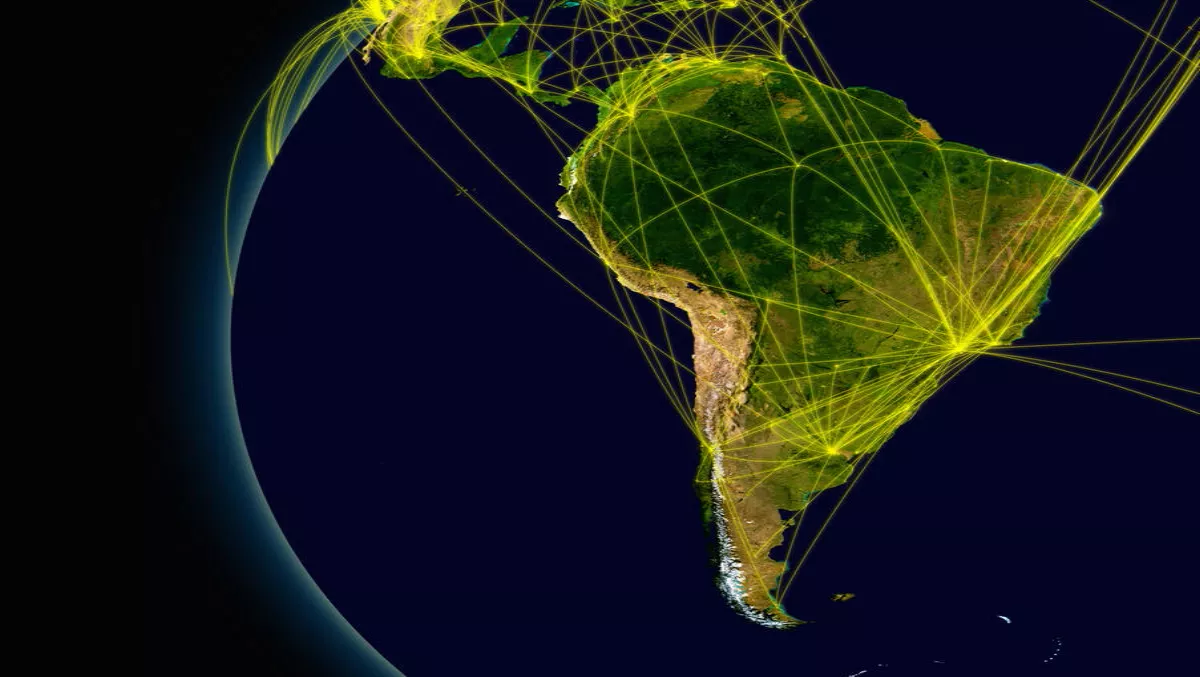
Why interconnection is taking off in Latin America
Positive economic news from Latin America (LATAM) about its Q2 gross domestic product growth increasing 1.1% annually – its best results in over three years – confirms the region's economic recovery is gaining traction.
This could be one of many reasons that the Global Interconnection Index, a recent market study published by Equinix, predicts LATAM could be the fastest-growing region worldwide in terms of Interconnection, potentially increasing 62% annually between 2016 – 2020.
Today, LATAM is the smallest geographic region in terms of estimated Interconnection Bandwidth capacity, with 154 Terabits per second (Tbps) installed in 2017.
By 2020, the study projects that LATAM could reach 626 Tbps, representing 13% of the global installed interconnection bandwidth capacity.
Interconnection bandwidth is defined as the total capacity provisioned to privately and directly exchange traffic with a diverse set of counterparties and providers at distributed IT exchange points.
As more IT infrastructure gets built (data centers, submarine cables) and in-region policies become more business-friendly, interconnection growth is expected to accelerate in the region.
Take, for example, the following trends driving this increase in LATAM Interconnection growth:
By 2020, it is expected that mobile shopping will represent 34% of the eCommerce in Brazil. Investments in submarine cables are huge in South America, with those announced in 2016 totalling the same amount as all those announced in the last five years combined. This is a result of the exponential growth of internet traffic, especially from content and cloud providers, which represents a shift in this technology's business model. In the past, submarine cable construction was primarily led by telecom companies.
Today, big content and data hyperscaler's, such as Google, Netflix and Facebook, are investing in their own subsea cable system infrastructures.
The industries, use cases and metros driving LATAM Interconnection growthThe Global Interconnection Index predicts that Interconnection Bandwidth capacity growth is expected to exceed 50% CAGR between 2016-2020 in all LATAM industry verticals, except in Telecommunications, which already had a high base.
Banking and insurance are expected to overtake the cloud and IT services industry as the largest sector, accounting for 27% of all LATAM Interconnection Bandwidth capacity in 2020.
This is due to personal banking now being available in both mobile and digital formats, leading the retail banking industry to anticipate innovations that will customise and enhance the customer experience, obsolete legacy business models and control costs.
Businesses in this industry must adopt new strategies that enable the fast development and production of innovative, customer-driven financial services offerings that meet growing consumer expectations.
The content and digital media industry accounts for the third largest sector in terms of an estimated annual Interconnection Bandwidth capacity growth of 65% by 2020.
In general, Brazil is one of the most engaged countries on Facebook and digital media.
For example, more than 100 million users share their moments on Facebook – 90% of them, on a daily basis through a mobile device.
So, content and media providers have to adapt and invest in social media and other technologies to deliver the best end-user experience to their customers who are consuming and interacting with their products/services.
By 2020, the primary use case across both enterprises and service providers for Interconnection Bandwidth capacity is to connect to network providers (181% CAGR), with cloud and IT service providers (91% CAGR) coming in second.
The increase in cloud adoption and the fact that content and digital media providers will need to regionalise their content to better serve a local LATAM market using lower latency and higher quality interconnection capabilities is driving this growth.
The interconnection growth across São Paulo, Rio de Janeiro, Mexico City and Buenos Aires metros is pretty consistent, averaging around a 63% CAGR.
However, these Brazilian metros combined are estimated to make up more than 67% of the total Interconnection Bandwidth capacity for the region by 2020.
São Paulo and Rio de Janeiro are the two most important economic metros in Brazil – São Paulo (32%) and Rio de Janeiro (12%) together represent almost half of the country's GDP.
Also, almost 70% of the colocation data center capacity in the country is located within a 75-mile radius of São Paulo and Rio de Janeiro, even though Brazil has 26 metropolitan areas with a population of more than one million.
By leveraging the information provided in the Global Interconnection Index, you can identify growth areas for your business by geography, use case and vertical industry to build an Interconnection-first strategy for your digital business.
Article by Eduardo Carvalho, Equinix blog network


